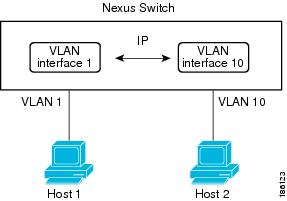You can configure the bandwidth for a routed interface, port channel,
or subinterface. Higher layer protocols use a bandwidth parameter to calculate
path costs. You can configure the bandwidth on a subinterface with one of the
following methods:
-
Explicit—Sets the bandwidth value for the subinterface directly.
-
Inherit—Sets the bandwidth that all subinterfaces inherit from
the parent interface as either a specific value or as the bandwidth of the
parent interface.
If you do not set the subinterface bandwidth or configure it to
inherit the bandwidth from the parent interface, Cisco NX-OS determines the
subinterface bandwidth as follows:
-
If the parent interface is up, the bandwidth of the subinterface
is the same as the operational speed of the parent interface. For ports, the
subinterface bandwidth is the configured or negotiated link speed. For port
channels, the subinterface bandwidth is the aggregate of the link speeds of
individual members of the port channel.
-
If the parent interface is down, the bandwidth of the
subinterface depends on the type of parent interface:
-
Port-channel subinterfaces have 100-Mb/s bandwidth for
subinterfaces.
-
1-Gb/s Ethernet ports have 1-Gb/s bandwidth for subinterfaces.
-
10-Gb/s Ethernet ports have 10-Gb/s bandwidth for
subinterfaces.
To configure the bandwidth of an interface, use the following command
in interface mode:
|
Command
|
Purpose
|
| bandwidth
|
Configures the bandwidth parameter for a routed interface,
port channel, or subinterface.
|
To configure subinterfaces to inherit the bandwidth from the parent
interface, use the following command in interface mode:
|
Command
|
Purpose
|
| bandwidth inherit
[value]
|
Configures all subinterfaces of this interface to inherit
the bandwidth value configured. If you do not configure the value, the
subinterfaces inherit the bandwidth of the parent interface. The range is from
1 to 10000000, in kilobytes.
|



 Feedback
Feedback